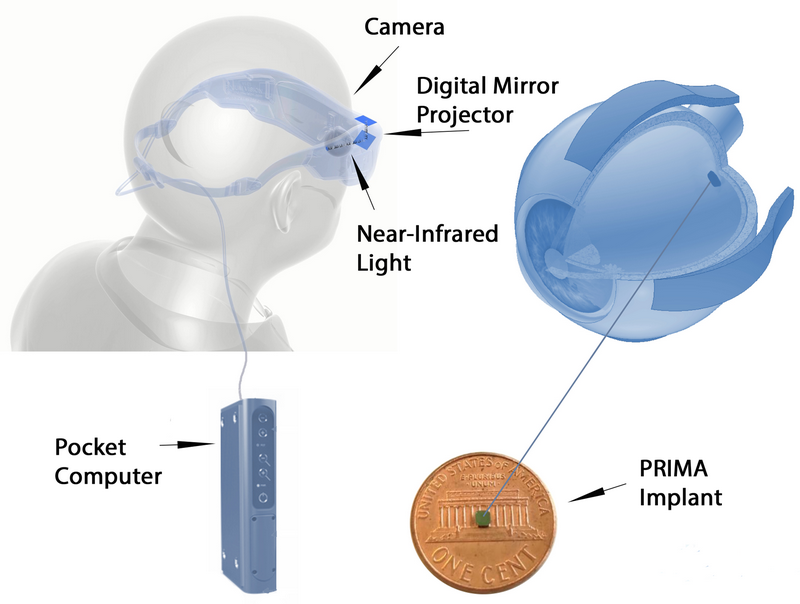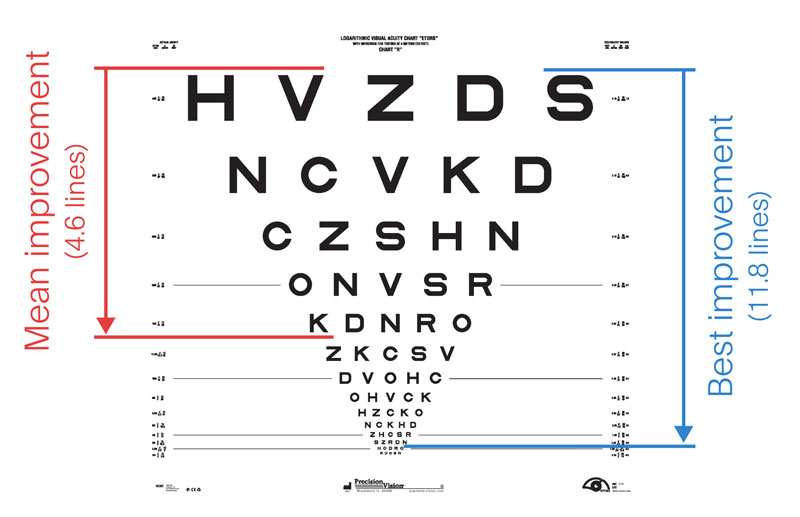The first clinical trials of a retinal implant in combination with a set of wearable devices to restore visual acuity in people have been completed in Europe. All patients participating in the project regained previously lost visual acuity, regaining the ability to read, solve crossword puzzles and play board games. A few more years will pass and the ability to restore clarity of vision will become common medical practice.

Image source: AI generation Kandinsky 3.1/3DNews
The research is being developed by the American company Science Corp. The original development was created on the basis of research by scientists at Stanford University and continued by the company Pixium Vision established for this purpose. It was later acquired by Science Corp. The PRIMA platform is a wireless and completely autonomous photoelectric implant, surgically implanted under the retina of the diseased eye, glasses with a camera and projection system, as well as a pocket computing unit for processing and enlarging images from the camera.

Image source: Science Corp
The PRIMA suite of solutions targets the treatment of age-related macular degeneration (AMD), which affects 8 million people worldwide. During an irreversible disease called geographic atrophy (considered an advanced form of AMD), the patient loses visual acuity – the ability to distinguish small details, which sharply reduces the quality of life. The implant restores lost visual acuity, as proven by PRIMAvera clinical trials involving 38 patients.

Dynamics of improvement in visual acuity according to the LogMAR table. Image source: Science Corp
«The findings represent an important milestone in the treatment of severe vision loss caused by geographic atrophy due to age-related macular degeneration. This is the first time that central retinal vision, which has been impaired by age-related macular degeneration, has been restored,” said Professor Frank Holz, MD, scientific coordinator of the PRIMAvera study. “Prior to this, there were no real treatment options to improve vision in these patients.”
The visual acuity of all participants was measured at 6 and 12 months after implantation using the LogMAR ophthalmic scale, and the results demonstrated clinically significant improvement. Success was determined by the ability to recognize 10 letters (2 lines) of the table. Some patients began to see 23 letters (4.6 lines), and the greatest improvement was recognition of 59 letters (11.8 lines). However, implantation did not worsen visual acuity when the system was turned off, indicating a good safety profile.
Clinical trials of PRIMAvera (in Italian – “spring”) were carried out to certify the complex on the European market. Scientists are confident that in a few years, many people will have the opportunity to regain visual acuity.